Using milk with iodine for tomatoes

Any plants during planting and in the process of growing need to be fed and treated with various fertilizers, the composition of which includes certain components. You can buy fertilizers in industrial stores, but, unfortunately, not every manufacturer can vouch for the quality and absence of harmful properties in their goods.
Therefore, you can always turn to folk methods, the recipes for which consist exclusively of means that are simple and understandable to any person.
So, for processing tomatoes, a combination of milk and iodine is quite often used, and many consider the effect of this mixture to be very effective.... Let us consider in more detail what properties this combination has, how to use it correctly so as not to harm the plant, and what diseases of tomatoes can be prevented by preventive treatment with this agent.
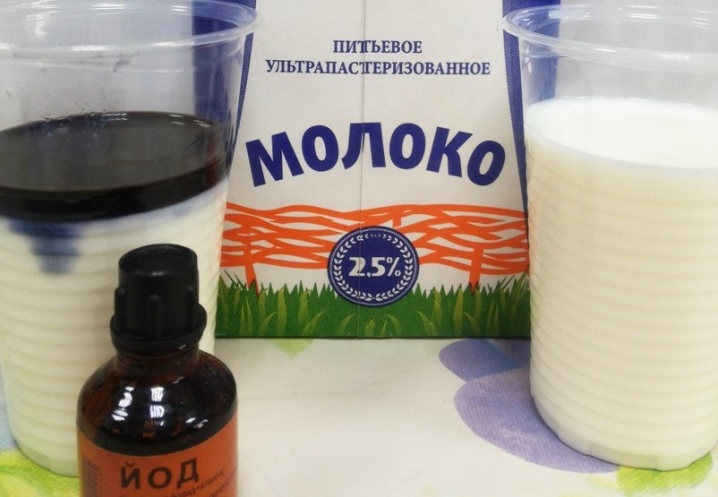
Peculiarities
Milk with iodine is a very famous and very popular remedy among gardeners.... This combination is used for feeding tomatoes and produces very good results, since both components have many beneficial properties.
Let's take a closer look at what benefits this remedy can bring to tomatoes:
- milk contains healthy amino acids, which are growth activators, as well as components such as iron, calcium and potassium, which have a beneficial effect on the plant;
- lactose, which is contained in milk and does not always benefit the human body, turns out to be has a beneficial effect on tomatoes, helping to get rid of the latter from harmful insects;
- also milk performs protective function, forming a thin film on the shoots and contributing to the normalization of the metabolic processes of the plant;
- iodine also benefits tomatoes, especially during the germination of the first shoots (due to mixing with milk, growth is stimulated, so the seedlings emerge much faster);
- iodine enhances natural resistance plants to the effects of pests, and also has a disinfecting effect;
- due to the special properties of iodine seedlings are less affected by pathogenic factors and take root better;
- a mixture of milk and iodine very effective in healing withering bushes, as well as improving the quality of the crop.
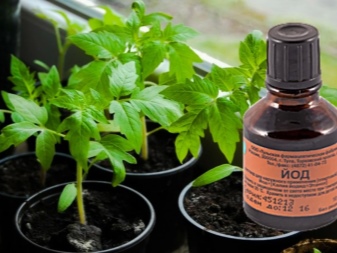

In addition to the benefits, one should not exclude the harm that this remedy can cause. In almost all cases, it is associated with incorrect dosage of the product and violations of the rules of use.
It should also be borne in mind that there are some restrictions on the choice of milk for the preparation of this product. For example, you should pay attention to a low-fat product of natural production, which does not contain sugar and any chemical components. Milk made from dry raw materials is categorically unsuitable for processing tomatoes.
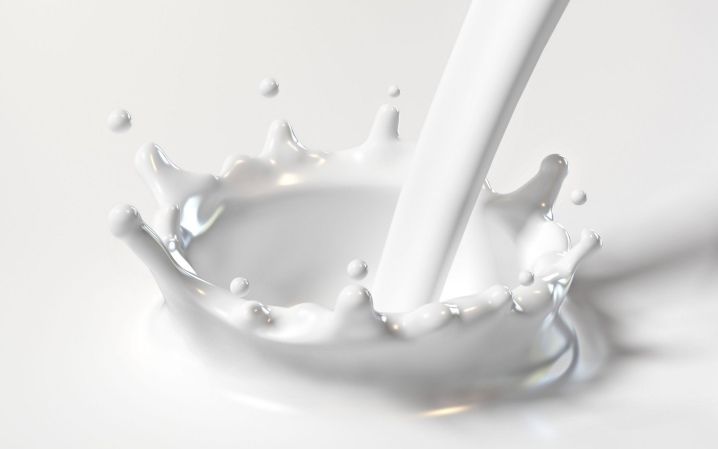
Top dressing
As mentioned earlier, milk with iodine is perfect for use as a top dressing for tomatoes, the main thing is to choose the right proportions and the way in which you will introduce the resulting fertilizer. To do this, we recommend that you study the recipes and the features of their use in more detail.
Recipe for solution for foliar feeding:
- milk - 1 liter;
- clean cool water - 12 liters;
- iodine - 10-15 drops.
Even young shoots of the plant can be fertilized with the resulting solution at the stage of growing seedlings. But such feeding requires certain safety measures.For example, irrigation should be carried out no more than three times from the moment of transplantation, since an excess of trace elements contained in the solution can adversely affect the tomato bushes.
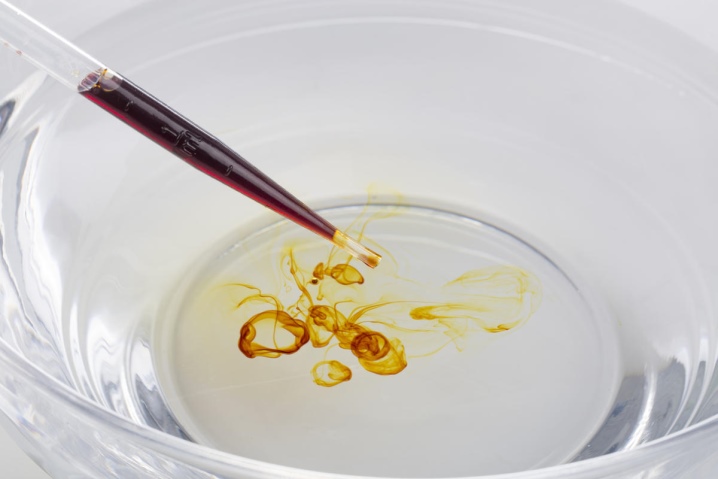
Several additional components can also be added to this top dressing:
- young garlic shoots;
- lumpy laundry soap;
- potassium permanganate solution;
- salt;
- mushroom tinder fungus in crushed form.
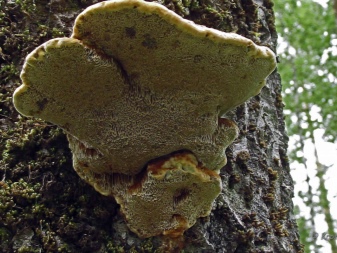

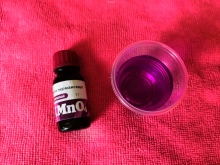

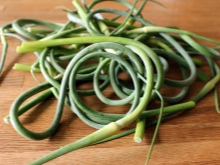
Also, gardeners are actively using the following solution for irrigating tomatoes:
- milk whey - 1 liter;
- water - 10 liters;
- any detergent - 1 tablespoon;
- iodine - 10 drops.

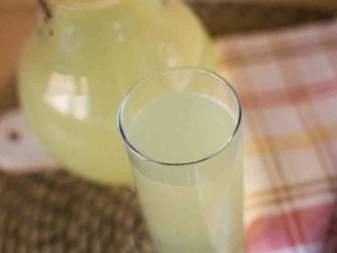
This tool is not only an effective top dressing for bushes, but also has disinfecting properties, thanks to which you can prevent the development of bacteria and prevent their appearance.
Effective fertilizer for ovary bushes:
- milk - 1 liter;
- iodine - 15 drops;
- boric acid - 1 teaspoon;
- water - 10 liters.
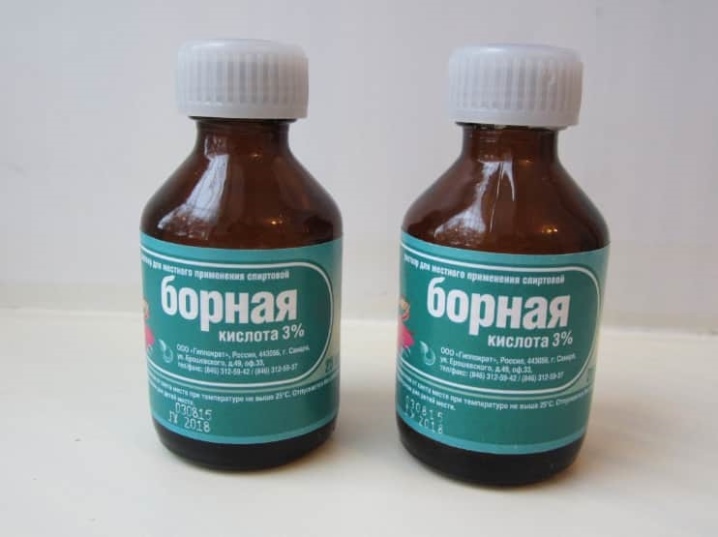
To prepare the solution, it is necessary to heat the water to 55 degrees, and then dilute all the other components in it. Top dressing helps to maintain and protect the ovaries from potential pests.
Here is another fertilization option that can be used not only for irrigation, but also as a root top dressing:
- milk - 1 liter;
- iodine - 10 drops;
- boric acid - 0.5 teaspoon;
- potassium permanganate solution - 0.5 liters.

To keep the solution not very concentrated, you can add a little water. This composition is excellent for improving the immune properties of the plant, for stimulating fertility and productivity. It can also be used during the setting period to support and nourish tomatoes.
Spraying tomatoes from diseases
Spraying with a mixture of milk and iodine is a very effective method of combating both fungal diseases and pests.
The thing is that the acidic environment of the solution does not have favorable conditions that contribute to the reproduction of parasites, therefore, the treatment of bushes leads to the early death of harmful microorganisms.
For spraying, household or professional sprayers are usually used, depending on the amount of vegetation that needs to be treated. It should also be borne in mind that the composition of the solution and dosage depend on the specific pest or disease that affects the tomatoes. Let's take a closer look at which options will be the most effective in solving a particular problem.
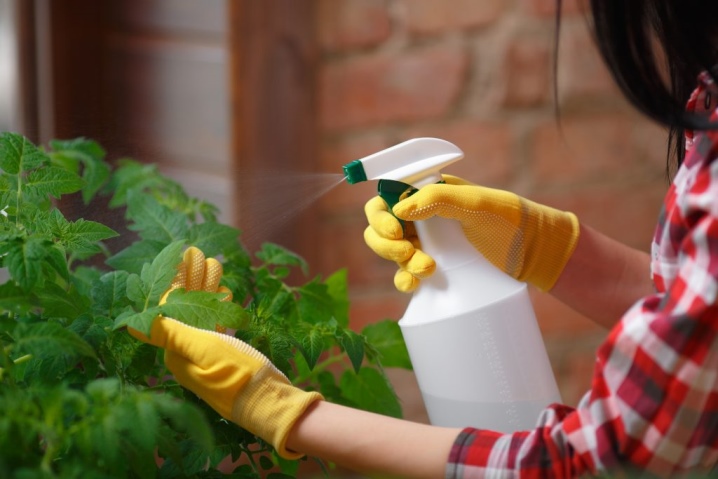
Late blight
Phytophthora is a rather dangerous disease of tomatoes, which can lead to the death of the entire crop. Plants in the greenhouse are often affected by the disease due to insufficient circulation of fresh air, as well as due to too dense arrangement of bushes. The appearance of late blight can be determined by the following symptoms:
- the appearance of gray and brown spots on the leaves, which over time become similar to sunburn;
- brown stripes on the trunk and branches;
- blackening on the stalks, followed by drying;
- the appearance of brown spots on the fruits;
- in the advanced stages of the disease, moldy spots may appear on tomatoes.
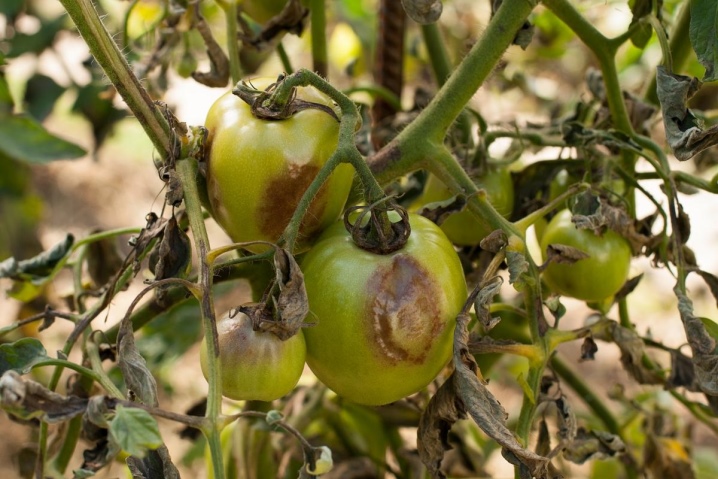
Usually, in the early stages, chemical agents help to cope with this disease, but when it comes to fruit damage, it is better to use natural remedies, and a solution of milk and iodine in this case will be the best option. Also, such a solution is excellent for prevention.
To prepare the solution, you will need the following ingredients:
- milk - 1 liter;
- water - 10 liters;
- iodine - 10-15 drops.
This solution is universal, so it can be used both for foliar treatment and for watering. When treating a plant, it is necessary to apply the solution several times, but with a break of 1.5-2 weeks.
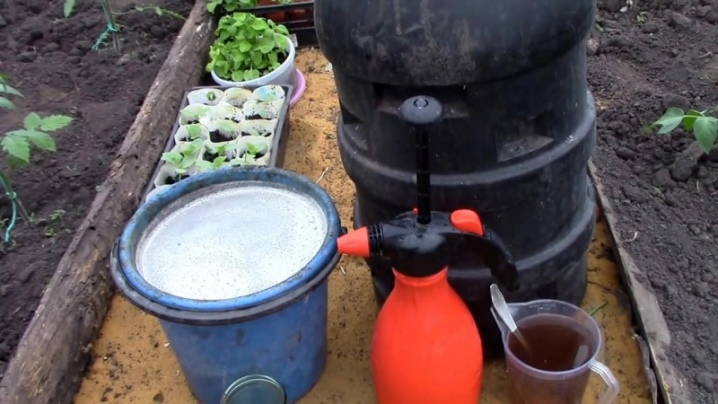
As for prevention, the use of the drug can be carried out every 3 weeks, but it is necessary to start the course before the ovaries appear.
Brown spot
Brown spot, also known as cladosporium, attacks tomato leaves, but also affects the yield of the bush. If untreated, all leaves gradually begin to dry and fall off, the process of photosynthesis is disrupted, and the plant may die.
Signs of infection:
- change in the state of the foliage of the plant during the flowering period;
- the appearance of light green spots on the leaves;
- the appearance of yellowness, as well as brown dry spots in the affected area.

To prevent the spread of the disease and prevent its appearance, we recommend treating tomatoes with the following solution:
- water - 10 liters;
- milk - 1 liter;
- potassium chloride - 30 grams;
- iodine - 40 drops.
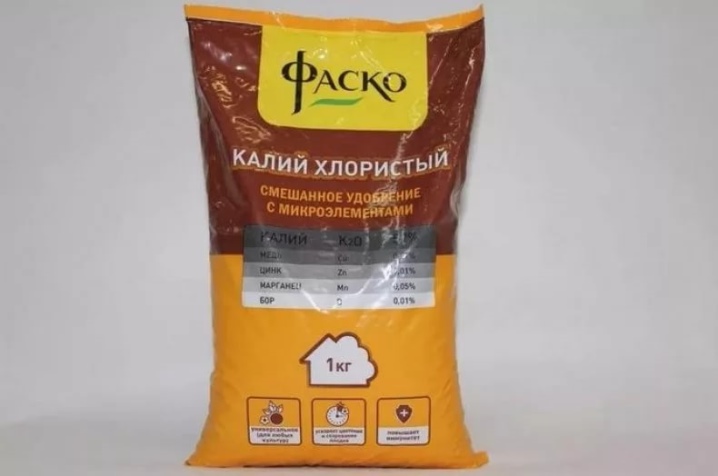
The solution is suitable for both greenhouse and open field plants. They need to spray the bushes no more than once every 2 weeks.
Gray rot
Fungus b. cinerea, also known as gray rot, can occur on tomatoes in hot weather and high humidity, and the onset of coolness will only exacerbate the situation, providing the disease with a comfortable environment for spreading.
Plants during the pinching period are especially at risk of infection, therefore we recommend that prophylaxis be carried out long before you notice the characteristic signs. Among the most common symptoms, the following are noted:
- spots of a gray tint appear on the fruits, along with this, the process of decay begins;
- along with rot and gray spots, you can observe a light fluffy bloom on the fruits;
- the fungus also affects the leaves and trunk of the plant: spots and rot appear.
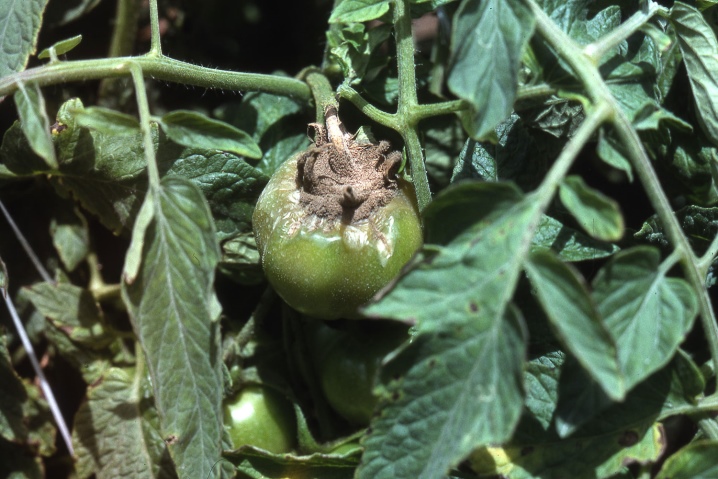
As soon as you notice the first symptoms of this disease, you must immediately start treatment. When preparing a solution against gray mold fungus, it is necessary to mix the following components;
- milk - 200 milliliters;
- water - 300 milliliters;
- iodine - 12 drops.
It is necessary to process the affected plants in the bottom-up direction, not missing the slightest area. You should also apply the solution to healthy bushes in order to prevent their infection.
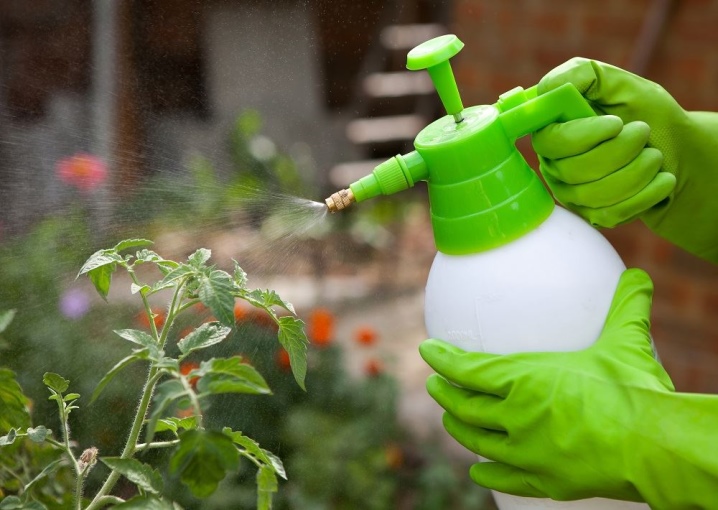
Tobacco mosaic virus
With the appearance of the tobacco mosaic virus, a rather rapid wilting of tomatoes occurs. The virus slows down the process of photosynthesis, which noticeably affects the growth of plants and the development of fruits. In addition, the main danger of the disease is that for several years the virus may not manifest itself in any way, but at the same time spread to all tomato bushes.
You can easily recognize this ailment by the following signs:
- spots of a beige shade appear on the foliage, similar to stains;
- dark brown spots may also appear.
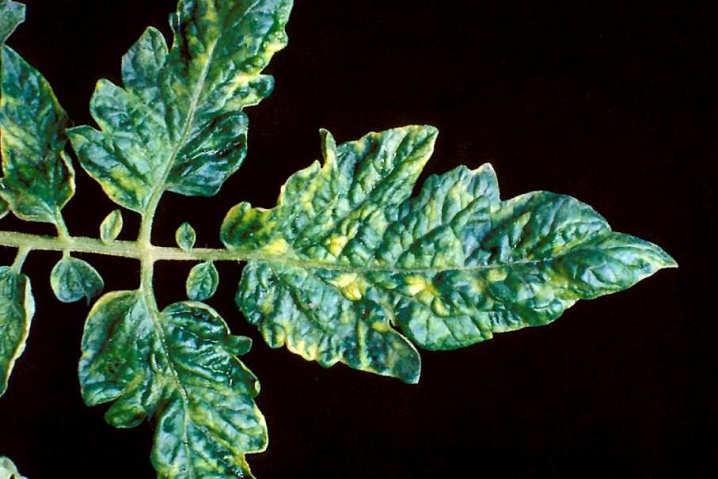
It should be noted that very often, the affected areas have to be removed, since the treatment of the disease can take a certain time, during which the virus can spread further. For the prevention of this virus, the same composition is used as for the fight against gray rot, but it must be borne in mind that it will not work alone: it is also necessary to use a solution of potassium permanganate, which should be sprayed with the plants when planting.

Fusarium wilting
Infection with this ailment occurs through the root system during the period of fruit formation: it is then that the plant is most weakened and can die in the absence of timely treatment and the necessary care. Also, the plant can become infected during pinching, since the fungus is able to penetrate through small lesions on the stem.
Fortunately, fusarium wilting is pretty quick, so you have plenty of time to take action.
To recognize an ailment, you should pay attention to the following symptoms:
- excessive dryness of leaves and drying out of the root system;
- the appearance of yellow spots;
- with the onset of coolness, the plants begin to wither rapidly, since this is the most favorable conditions for the rapid development of the fungus.
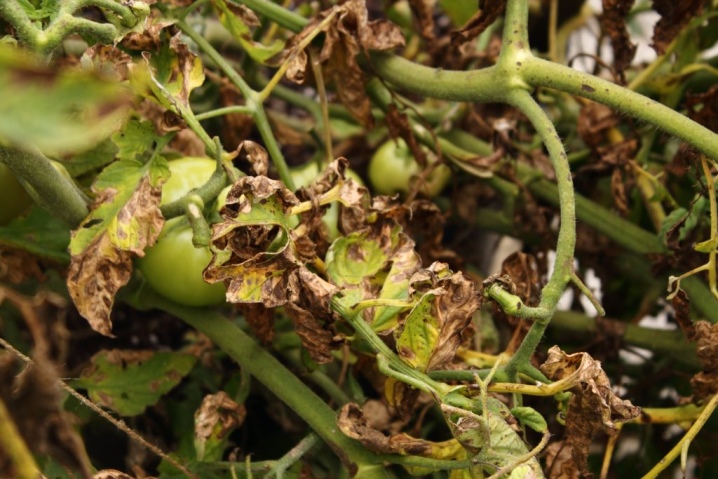
To save the crop from death, we recommend using the following recipe:
- warm water - 5 liters;
- milk - 500 milliliters;
- iodine - 10 drops.
This solution can be used to process not only young and adult tomato bushes, but also planting material. Thus, you can prevent the emergence of a harmful infection and save the crop.
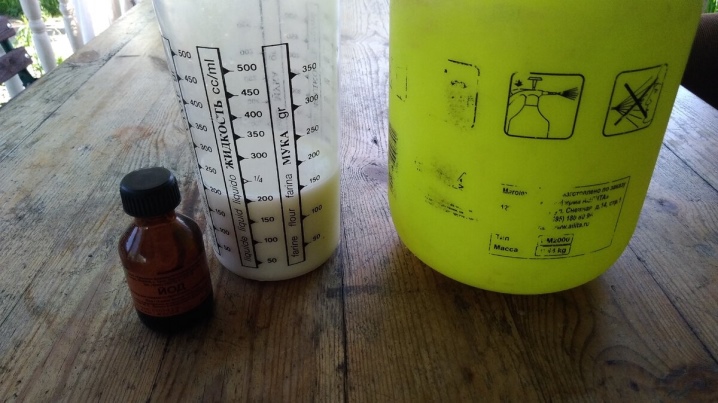
Useful Tips
A solution with milk and iodine is, in fact, a universal effective remedy, but when using it, it is necessary to adhere to some recommendations. Let's take a closer look at some helpful tips to help you use tomato solution.
- Iodine milk can be used throughout the tomato growing season. The beneficial effect of this remedy will be relevant both during planting, vegetation and flowering, and during the ripening of fruits.
- Regardless of the method of application of the solution, you should not process the plant too often, as you risk harming it.
- If only milk is suitable for spraying, then for watering, you can use various fermented milk products, the benefits of which can be many times greater.
- It is better to treat all ailments in a timely manner, since at advanced stages the effectiveness of milk and iodine will be reduced to a minimum.
- Since the solution with milk and iodine is completely safe, you do not have to be afraid for your health, as well as for your pets... But before eating the fruit, you still need to wash it under running water.

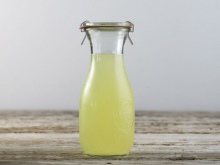

With this information, you can grow a healthy crop while keeping every fruit intact.













The comment was sent successfully.